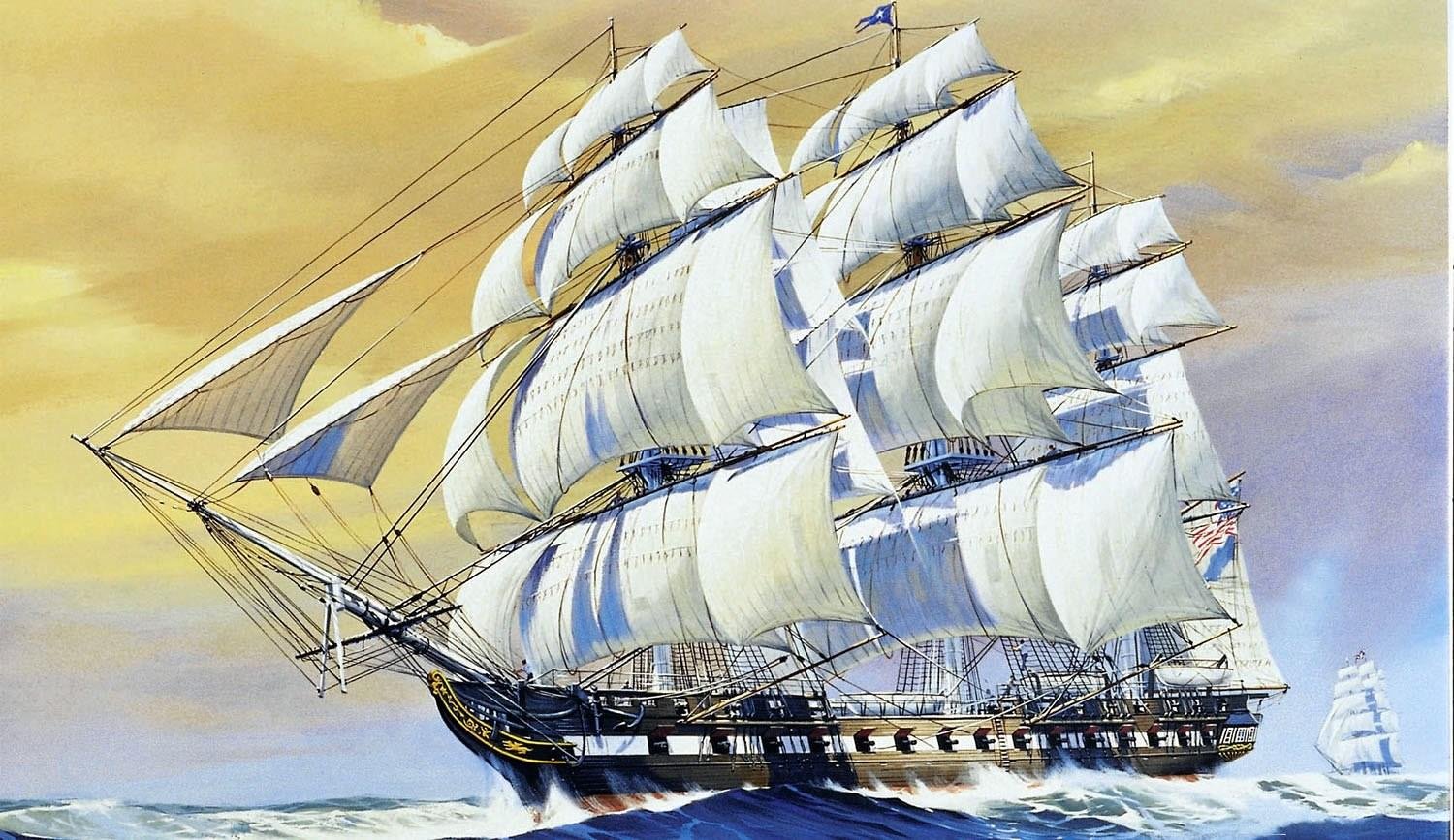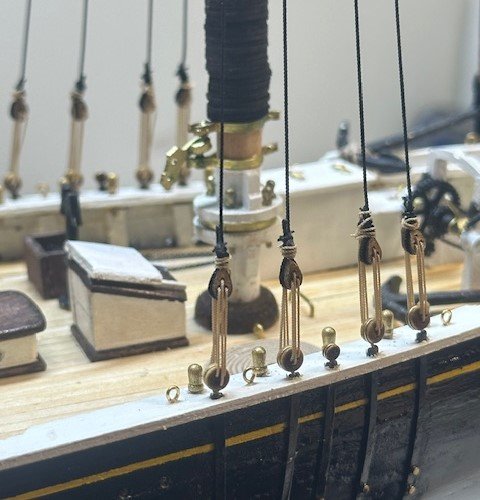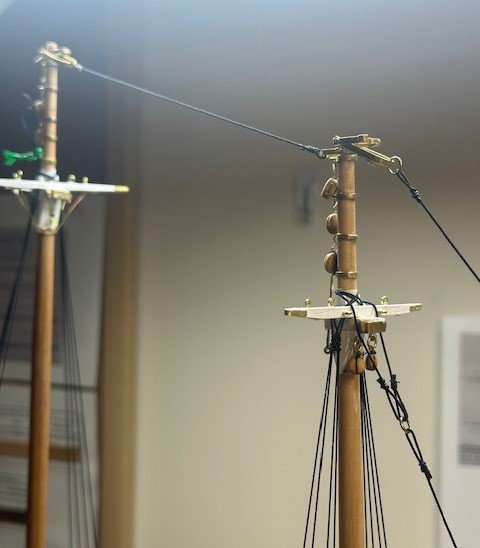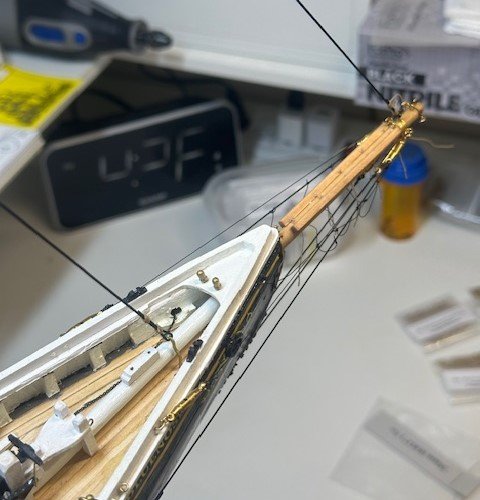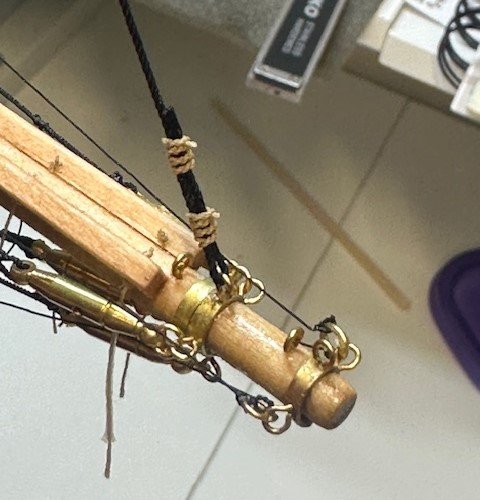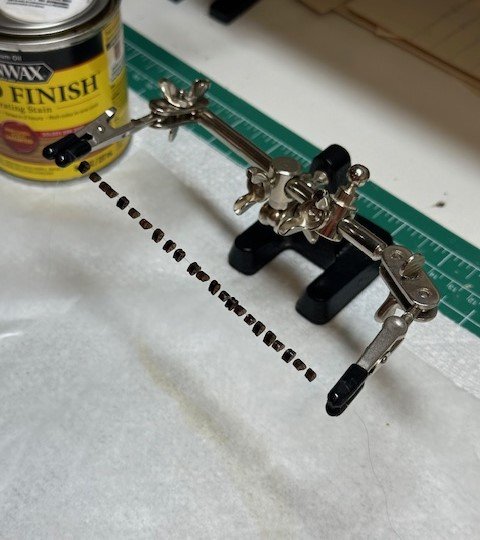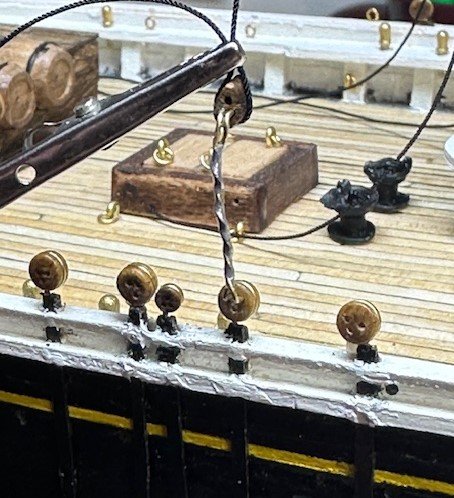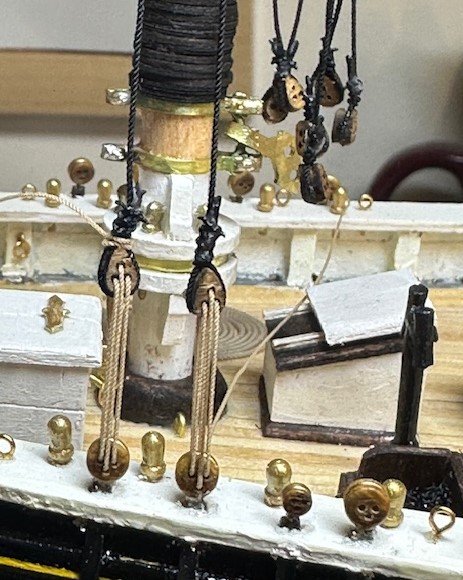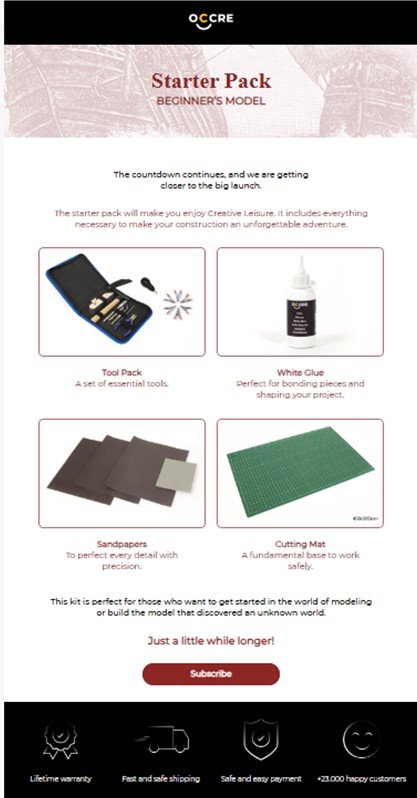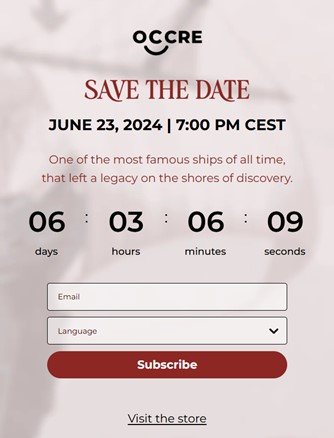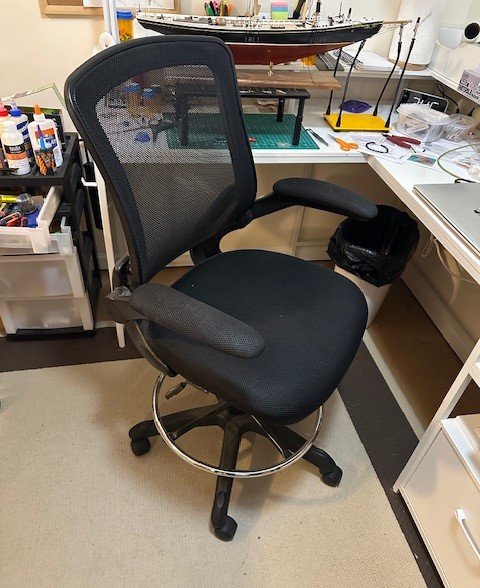-
Posts
1,000 -
Joined
-
Last visited
Content Type
Profiles
Forums
Gallery
Events
Everything posted by GGibson
-
Great work, Jon, in using the Dremel to achieve your goals. The ladders look really nice from my perspective. I was also impressed with Mustafa's method in using his Proxxon mill machine and I'm excited to have added that mill machine to my shipyard tools, as well. I have used it several times already with my Bluenose and am sure it will get a workout once I get to my Constitution. Anxious to see your remaining work on your gun deck! Carry on! 👍
-
If you are referring to the product in the original post, that appears to be the OcCre cabinet which can be found on MicroMark's website. OcCre® Workshop Cabinet – Micro-Mark (micromark.com) While it looks nice and tidy, if you plan on spending any length of time in this hobby, I would think you would outgrow this cabinet pretty quickly with more.... STUFF! I know I have! 👍🤣
-
This latest one started at $1,200. And yes, like the first one that ended up at $4,250, you won't see hardly any action on it until just hours before it closes. I was watching the bidding on that first one and, within a couple hours of the closing, bids were still at a "reasonable" $1,500. Then two or three bidders got into a bidding tussle and.... boom. <shrug>
-
Sails are looking really good, John! Soooooo close to being done! 🏆 Not sure I saw it in any of your recent pictures, John. When you get to actually rigging, for instance, your main gaff and main boom (with sail) to the mast, what are you using to hold them up in place while you connect to the mast? Again, great work, sir!
- 282 replies
-
- Bluenose
- Model Shipways
-
(and 1 more)
Tagged with:
-
Welcome, Joanne! I think we all think that way... "What do I really want to build for myself? What piques my interest?" Looking forward to seeing what you decide? Hopefully you'll start a build log here. Good luck! Lots of great advice within these MSW confines! 👍
-
Ha! Just wait until I get to my own Constitution, Jon!! 🤣 Been thinking if there was a way to combine all of your build logs... Peter's, Jon's, Mustafa's... in one giant task-arranged PDF for my own procedure manual when I get to working on mine... <shrug> To the question at hand, makes sense that they could be laid that way on the deck, but definitely not for the hull planks.
-
Sails are looking really nice, Tim! Great job with the rigging. I'm still very apprehensive about doing the sails on mine... You are about done! Congrats!
- 145 replies
-
- Bluenose
- Model Shipways
-
(and 1 more)
Tagged with:
-
Another small update as I complete different phases of the rigging process (and I haven't even gotten to the fun stuff yet!)... A few weeks ago, I had run the shrouds for the lower masts and had begun to attach the lanyards to each of the sixteen sets of deadeyes. I was pleased in how that all came out, with all of the deadeyes appearing to be spaced well and even with one another. I'll work on the ratlines very soon. With the lower shrouds rigged (short of the ratlines), I then completed the lines for the spring stay, the jib stay and the jumbo jib stay. All pretty much straight-forward runs. I wish I knew how to create nice shackles, as I simply used some brass jump rings in place of shackles where they were called for. Perhaps by the time I get to the builds waiting in the wings, I'll come up with a good method/process. I realized I had not previously prepared and installed the jumbo jib stay bail that wraps around the bowsprit, so I roughly tried to shape one using 1mm brass rod and inserted each end into the deck. I also noted as I was working on running the line for the spring stay between the main mast and fore mast that I had not placed the futtock shrouds (two on each side (port and starboard) that are brass wire pieces starting as eyebolts on the trestle tree spreaders and are bent to the hoops in the futtock band. Inserted those and secured with a drop or two of CA glue. Well, I think other than working on the aforementioned lower shroud ratlines, my next step may be the top masts, and everything associated with securing those. Hope I haven't forgotten anything else that may be more difficult as the rigging process continues! As always, appreciate everyone's time in reading, liking (or laughing), and comments. For those in the USA celebrating the Independence Day festivities this week, please have a safe and awesome celebration with friends and families! God Bless the USA!
- 184 replies
-
- Bluenose
- Model Shipways
-
(and 1 more)
Tagged with:
-
These look awesome, Chuck! I have enough now to finish my Bluenose, but definitely want to take inventory of what I will need for the ships waiting up in boxes on the shelf! And definitely love the idea of having the slightly larger holes, as we always seem to need to ream out the holes for whatever rigging we are using. Thanks for doing these and keeping us updated!
-
Another very small update since it's been over a month. Had some travels to attend the oldest granddaughter's HS graduation and a few other distractions, as well as just taking some time on this area of the Bluenose build. Time to work on the lower mast shrouds. Cut out the kit-supplied oval deadeyes from the sheet, cleaned them up the best I could (these things are small!), strung them on some thread, dipped them in some stain, and hung them to dry. Using some .5mm (0.019") black rope for the shrouds, I tied and seized the eight lengths at the tops of the lower shrouds and, as others have done, created a "spacer jig" with some wire in order to manage the consistent length of each shroud and deadeye. Getting some small grooves around the oval deadeyes was helpful in securing the rope to the deadeyes before hitting them with some diluted PVA and seizing with smaller thread. Have now just begun to run the lanyards between the oval deadeyes and their respective round deadeyes. I am using .35mm (0.013") tan rope for the lanyards. Two lanyards down, fourteen to go. Can't wait until I get to the ratlines...!! 🤣🤣 And, in the "for what it's worth" category, I hate these extreme closeup photos that detail how bad some of this paint job is... Grrr..... As always, appreciate the comments and criticisms.
- 184 replies
-
- Bluenose
- Model Shipways
-
(and 1 more)
Tagged with:
-
I purchased Bob Hunt's Bluenose practicum when I began my Bluenose and used it fairly extensively in the early stages of my build. However, as I have progressed, I have hardly used it at all, relying more on other MSW Bluenose build logs that, to Peter's point, have awesomely progressive pictures associated with their content, making them more beneficial to me to follow. In anticipation of "someday" getting to my own Constitution presently sitting in a box up on the shelf, I also purchased Bob Hunt's Constitution practicum now (to save money in case his price increases over the next few years), as I simply look at his practicum as an additional tool/resource in this hobby. Truth be told, though, I will no doubt rely more on other MSW Constitution build logs like what you gentlemen have been documenting, as they are much more detailed and have more "oops, avoid this..." type precautions. With all that said, gentlemen.... Carry on! 🏆👍🏆👍
-
A ton of great information here in this last series of posts, Jon! Thanks for sharing! I have purchased wood strips from Joe at Modelers Sawmill - Milled wood lumber strips for the model ship builder - Modelers Sawmill. I'll probably look to him again when I get to my own Constitution. Great work on yours, sir!
-
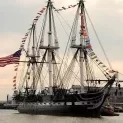
Chairs! Let’s see your chairs.
GGibson replied to Desertanimal's topic in Modeling tools and Workshop Equipment
I've had mine since Feb 2023 when I moved the shipyard down to a basement room. It's quite comfortable to sit for hours at a time, has wheels (as you can see) which makes it nice to roll easily to a couple additional tables I have in the room, and I like the arms to rest on, but they do both pivot up out of the way, if needed. Amazon.com: Modway Veer Reception Desk Flip-Up Arm Drafting Chair in Black : Office Products -

USS Constitution by mtbediz - 1:76
GGibson replied to mtbediz's topic in - Build logs for subjects built 1751 - 1800
Welcome back, Mustafa! I've been away from my Bluenose for a bit, as well. Need to get back to my shipyard! I love the look of those doors! Great work, they look awesome!
About us
Modelshipworld - Advancing Ship Modeling through Research
SSL Secured
Your security is important for us so this Website is SSL-Secured
NRG Mailing Address
Nautical Research Guild
237 South Lincoln Street
Westmont IL, 60559-1917
Model Ship World ® and the MSW logo are Registered Trademarks, and belong to the Nautical Research Guild (United States Patent and Trademark Office: No. 6,929,264 & No. 6,929,274, registered Dec. 20, 2022)
Helpful Links
About the NRG
If you enjoy building ship models that are historically accurate as well as beautiful, then The Nautical Research Guild (NRG) is just right for you.
The Guild is a non-profit educational organization whose mission is to “Advance Ship Modeling Through Research”. We provide support to our members in their efforts to raise the quality of their model ships.
The Nautical Research Guild has published our world-renowned quarterly magazine, The Nautical Research Journal, since 1955. The pages of the Journal are full of articles by accomplished ship modelers who show you how they create those exquisite details on their models, and by maritime historians who show you the correct details to build. The Journal is available in both print and digital editions. Go to the NRG web site (www.thenrg.org) to download a complimentary digital copy of the Journal. The NRG also publishes plan sets, books and compilations of back issues of the Journal and the former Ships in Scale and Model Ship Builder magazines.

